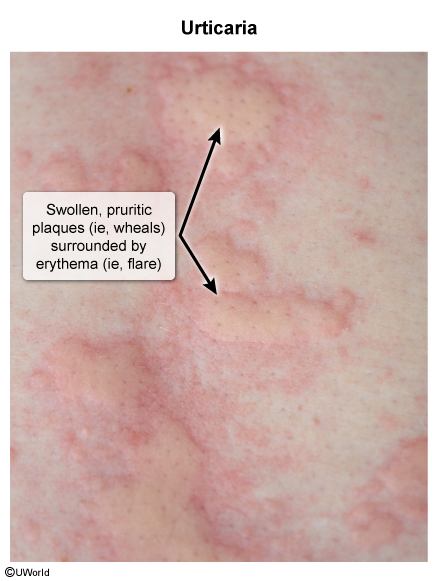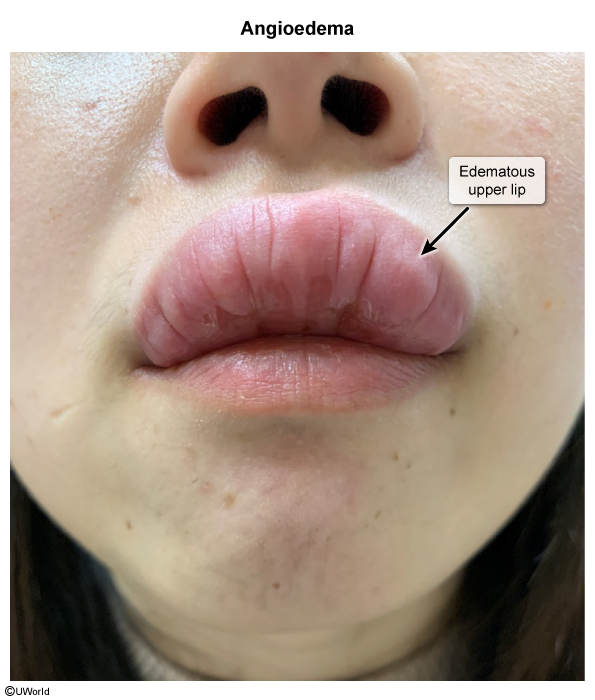Angioedema And Urticaria
Article Sections
Introduction
Angioedema and urticaria are conditions marked by localized swelling (typically of the face, lips, mouth, throat, extremities, and/or genitalia) and erythematous, pruritic wheals, respectively. Angioedema affects deeper layers of the skin and subcutaneous tissues, whereas urticaria involves the superficial dermis. These conditions can coexist (eg, mast cell–mediated angioedema) or can occur independently (eg, bradykinin-mediated angioedema). They present a complex spectrum of symptoms, requiring careful consideration of their overlapping and distinct features to effectively guide diagnostic and therapeutic interventions.
Pathophysiology
The pathophysiology may involve direct or indirect activation of mast cells and basophils, leading to the release of various mediators, such as histamine, bradykinin, and other vasoactive substances. In other cases, the pathway is independent of mast cell activation and mediated by the kinin-kallikrein system (eg, bradykinin). Finally, in some cases, the pathophysiology is not completely understood.
Continue Learning with UWorld
Get the full Angioedema And Urticaria article plus rich visuals, real-world cases, and in-depth insights from medical experts, all available through the UWorld Medical Library.
Figures
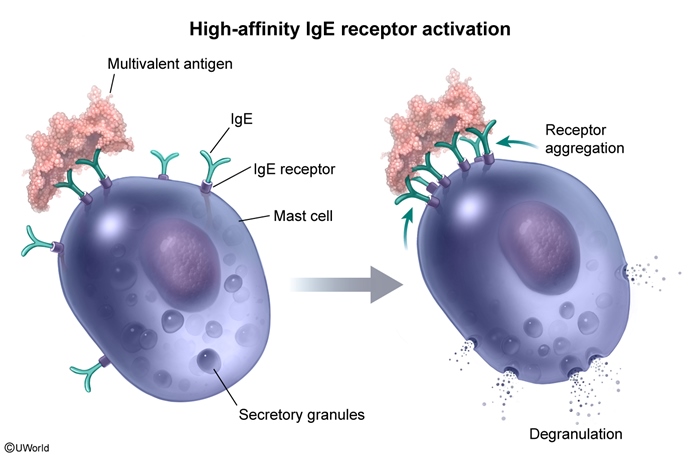
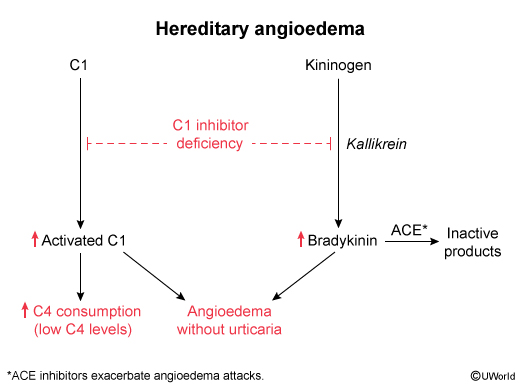
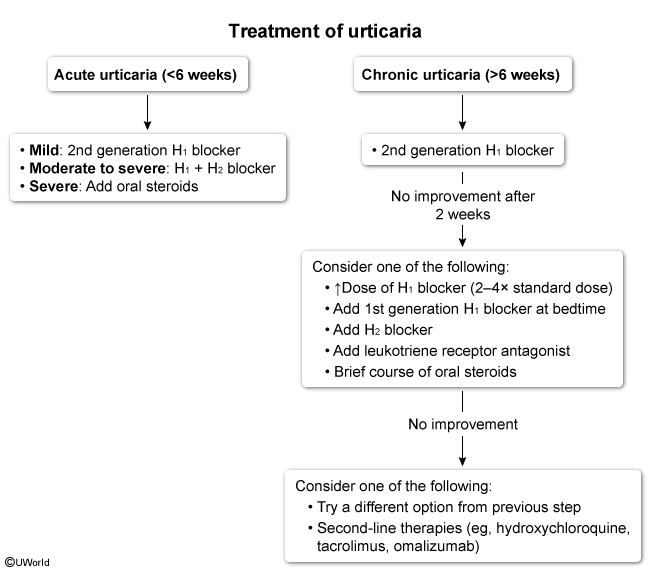
Images
